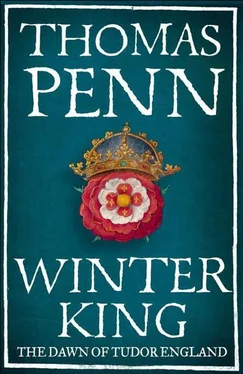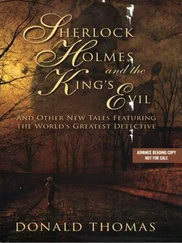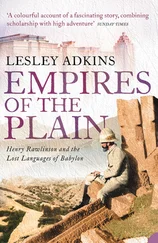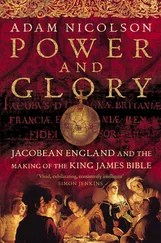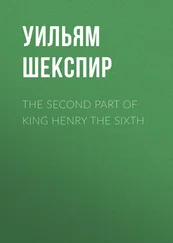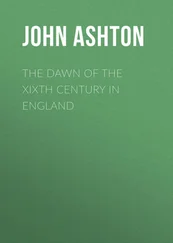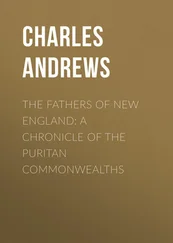Five days later, on the other side of the city, the ambassadors were present at another execution, this one a private affair, as befitted a true nobleman. If Warbeck’s trial had been perfunctory, Warwick’s was a farce. At his hearing in London’s Guildhall, as utterly confused now as he had been by the plot to free him, the earl had to be ‘compelled to answer’. The records of his trial were locked away in a cupboard with three locks, the keys allocated separately to three unnamed royal officers. Under louring skies, lightning and thunder, with rain driving in off the Thames, Warwick was led out to his place of execution on Tower Green, and beheaded.
Henry VII had been on the throne for fifteen years and three months. Only now, with these two executions, did he feel safe. 48
As the new century began, the Spanish ambassador Rodrigo de Puebla posted a dispatch from London to Ferdinand and Isabella of Spain. He expatiated on England’s tranquillity and obedience. There had, he wrote, ‘always been Pretenders to the crown’; more than that, there had been a number of contesting claims to the English throne, ‘and of such quality that the matter could be disputed between the two sides’. Now, however, ‘it has pleased God that all should be thoroughly and duly purged and cleansed’. There remained ‘not a drop of doubtful royal blood’. The only royal blood in the kingdom was the ‘true blood’ of Henry VII, his queen, Elizabeth, and ‘above all’ their first-born son Arthur, prince of Wales and heir to the throne. The civil wars, he said, were over.
De Puebla’s mood was skittish; he really should, he added breezily, stop harping on about the two executions, as he was aware that he had written ‘so often’ about them recently. The way was now paved for a spectacular royal wedding between England and Spain, one which would set the seal on Henry VII’s dynastic ambitions. It was a dispatch intended specifically to communicate a sense of closure to the Spanish monarchs, to show that England possessed a dynasty fit for an infanta of Spain. The wedding preparations could begin. 49
Richmond
In the early afternoon of Friday 12 November 1501, the sixteen-year-old Catherine of Aragon and her retinue, ‘in most sumptuous wise apparelled’, reined in their horses in front of London Bridge, on the Southwark side of the Thames. Awaiting her, on the north bank, the city dominated a sweeping arc of the river, fringed by the entanglement of wharves, quays, jetties and shipping through which flowed London’s immense mercantile wealth. From the foursquare royal Tower on the city’s eastern edge to the Dominican monastery of the Blackfriars in the west, its skyline a forest of spires and belltowers. Above them all soared the greatest spire, five hundred feet high, which topped the Gothic bulk of St Paul’s Cathedral, where Catherine and Prince Arthur were to be married two days later. 1
Through its fortified stone gate, Catherine could see London Bridge itself, its twin-towered portcullis and drawbridge topped with the heads of traitors, its houses crammed precariously on either side, and in its midst a riot of colour: the first of the six extravagant pageants celebrating the Spanish princess’s arrival in and ceremonial progression through the city to St Paul’s. 2At her side was the slight, carrot-haired ten-year-old who had been assigned a crucial role in the festivities. Detailed to attend on the princess closely, to accompany her through the city and down the aisle, was the king’s second son, Henry duke of York.
Prince Arthur’s marriage to Catherine, younger daughter of Ferdinand of Aragon and Isabella of Castile – the pious, re-conquering ‘Catholic monarchs’, as the pope had entitled them – was the culmination of all Henry VII’s ambitions. First brokered back in the spring of 1489, it had survived the violent fluctuations of European dynastic politics and a convoluted dance of negotiation between Henry and Ferdinand, two equally suspicious monarchs: pulled one way by Henry’s abortive invasion of France and the tension-filled years of Warbeck’s conspiracy, and another by France’s own expansionist tendencies, which Henry’s right-hand man John Morton, archbishop of Canterbury, had described as its ‘unbridled rage for domination’ and which filled both monarchs with alarm. 3Twelve years and numerous subsequent treaties, proxy marriages and ratifications later, the day was finally at hand.
A fortnight long, the planned celebrations were of an unparalleled splendour and complexity. Following Catherine’s reception and marriage, the festivities would move west along the curve of the Thames, past the large bishops’ palaces whose gardens lined the water’s edge, and the cloistered inns of court which churned out the country’s finest legal minds, to Westminster. Finally, they would culminate at Henry VII’s new palace of Richmond, rushed to completion in time for Catherine’s arrival.
Two years in the making, the ceremonies would, so the king was determined, break new ground. Henry and his planners had delved into the archives, scouring precedents from previous royal celebrations. They cherry-picked the most dramatic features from the all-conquering triumphs of Henry V, and the glamorous tournaments of Edward IV, whose close links to that epicentre of chivalric sophistication, the ducal court of Burgundy, were an inspiration; and they cast a thoughtful and creative eye over the most spectacular European court celebrations of recent times. The result would be a supreme cultural articulation of sovereignty, spelling out a very clear message. Henry VII and his descendants, and they alone, were the rightful monarchs of England: all-powerful, a dynasty that presided over the ‘common wealth’ of the state with a benevolent and omnipotent hand.
All of which could hardly mask the fact that the wedding plans had their roots in division, discord and blood. For it had been on 19 November 1499, the same day that the earl of Warwick, bewildered, backward and harmless, had made his forced confession in front of a tribunal of Henry’s counsellors in London’s Guildhall, that the city corporation had met in the same building to start planning Catherine’s lavish civic reception. 4
Over the centuries, London’s relationship with the crown had settled into an uneasy symbiosis, their interests increasingly intertwined. In return for massive corporate loans from the city, the unofficial royal bank, a perennially cash-strapped monarchy ceded to it privileges of self-government and trade protection. And as the royal household grew more unwieldy and less mobile, it settled into its houses strung out along the banks of the Thames, within easy reach of Westminster, the centre of law, government and administration, and London, its most reliable source of funds. Royal servants became part of the fabric of city life, renting and acquiring property, accumulating business interests, mingling with the mercantile elites, who were themselves familiar figures at court. Under Henry, the relationship had, more or less, continued to prosper. 5
There was, though, an undertow of friction between a city that jealously guarded its own political and economic liberties and a crown which sought to control and manipulate them. Cracking down on the habitual sharp practices indulged in by the city’s merchants and financiers, Henry had made examples of prominent Londoners with a series of punitive fines, while he and his counsellors constantly played off the city guilds against each other, favouring one, then another, in a process of divide and rule. During the height of the Perkin Warbeck conspiracy, Henry’s embargo on trade with the Low Countries had wrecked London’s economy, with merchants unable to export goods to the great commercial centres of Bruges and Antwerp, a ban reinforced by sporadic harassment and intimidation by royal officials. To the consternation of the city guilds, when trade officially restarted in 1496 Henry himself chose the new governor of the English merchant adventurers in Bruges, a privilege previously reserved to the city. Conspiracy had continued to linger: merchants’ trade routes were arteries for information and espionage, and London’s citizens had been among those caught up in the Warbeck plot. Highly suspicious of the city’s independent-mindedness and covetous of its wealth, Henry was always looking for opportunities to tighten his grip. 6
Читать дальше
